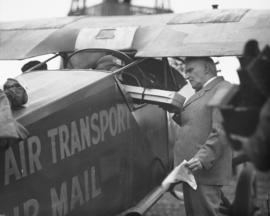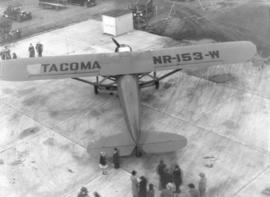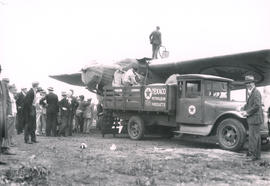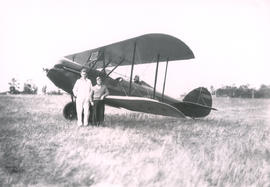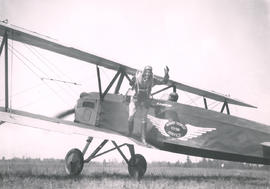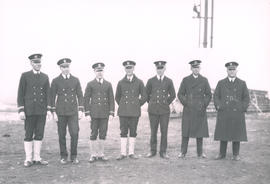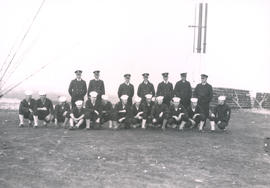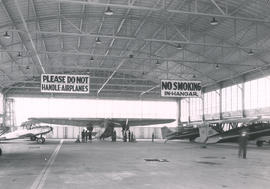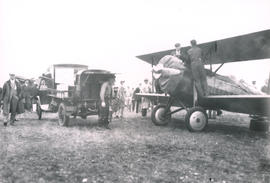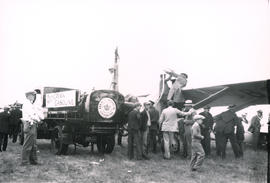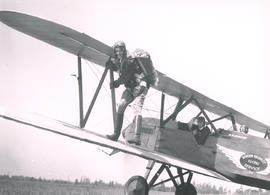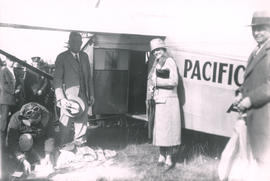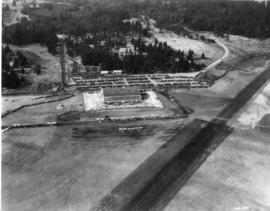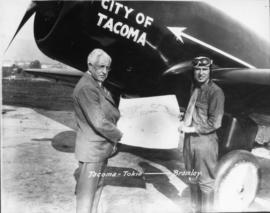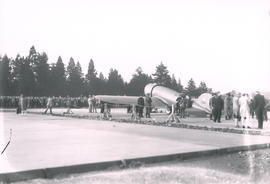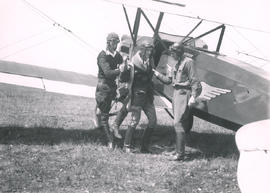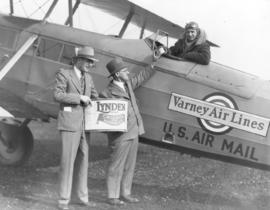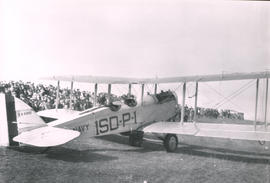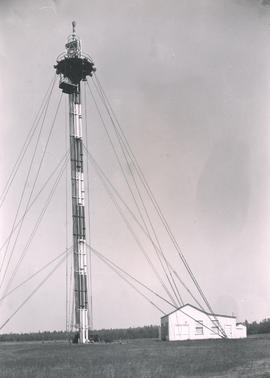- Item
- 1928-04-15
Part of General Photograph Collection
Sunday, April 15, 1928, saw the inauguration of the new American Railway Express Co. air transport service, provided for Tacoma in conjunction with the Pacific Air Transport Co. fleet of mail carriers. It would be the first outgoing air parcel service under this new arrangement. The pilot pictured above smilingly accepts delivery of a slender box from an unidentified official before his northbound departure. Hundreds of people had gathered at the Mueller-Harkins Airport to celebrate this new service. (TNT 4-16-28, p. 7, TDL 4-15-28, 8-A) BGN-186, TPL-1597
Transport planes--Tacoma; Air pilots--Tacoma; American Railway Express Co. (Tacoma); Shipping--1920-1930; Air mail service--1920-1930;
